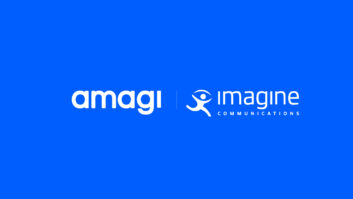NEW YORK – Huawei has begun selling its first smartphone direct to U.S. consumers via its own online store to build brand awareness.
If the brand-building effort is successful, Huawei believes it can entice carriers to carry Huaweibranded devices rather than sell Huawei-made carrier-branded phones.
Moderately priced smartphones like the $299 unlocked Ascend Mate 2 LTE phablet, which Huawei began offering today for preorder, will flourish as the U.S. phone market becomes “more open” as carriers to wean consumers off subsidized phones purchased under contract, said Zhiqiang Xu, newly appointed president of Huawei Device USA.
The Mate 2 phablet with 6.1-inch screen and Android 4.3 Jelly Bean OS is available as an unlocked device through www.GetHuawei.com beginning today and will ship out to consumers in about a week, said Michael Guo, head of e-commerce for Huawei Device USA.
The company is also developing a second phone to sell through its direct-to-consumer site, said Xu. The Mate2, unveiled at International CES, features 6.1-inch HD display and operates in the AT&T and T-Mobile GSM and LTE networks, AT&T’s HSPA+21Mbps network, and T-Mobile’s HSPA+42Mbps network.
Although consumers can activate it on either carrier’s network, Huawei will include a $50 SIM card activated with a free month of service from an MVNO that offers LTE.
To promote the brand and the phone, Huawei will focus initially on digital channels such as social media, digital media and paid searchengine marketing.
Awareness of the Huawei brand in the U.S., though small, is growing, he said, having hit 22 percent in 2013, up from 9 percent in 2012. In China, awareness hit 68 percent in 2013.
In the U.S., the company is positioning itself as an approachable, innovative, progressive challenger, Xu said. Because smartphone advances have stabilized and are no longer delivering “disruptive innovation,” other companies’ flagship phones “don’t have big differences,” Xu explained. That “gives us a very good window of chance to be a challenger” by offering innovative phones at approachable prices in the middle of the price range, starting with the $299 Mate2, he said. In the U.S., smartphones are priced without subsidy either below $200 or above $400, with “few choices in the middle,” he noted.
The Mate2 also offers more value than other wellknown brands because, he said, consumers “sometimes pay too much” for smartphones priced to support vendors’ multimillion promotion campaigns.
Though selling the phone direct to consumers, Huawei will continue to pursue its ODM business model with U.S. carriers while it promotes its brand through direct sales to consumers. “In the U.S. carriers dominate, and we must go to carriers as well,” Xu said. “Later on, my job is to work with carriers to offer Huaweibrand products.”
In the U.S., multiple GSM carriers offer Huawei-made feature phones and smartphones.
Worldwide, Huawei encounters no problems launching phones under its own brand, Xu said. In Europe, the company can sell $550 and $600-plus phones through carriers.
Xu acknowledged it will take some time to gain carrier acceptance in the U.S. “It took 1.5 years to get European carriers to accept the Huawei brand,” he said. Last year, Huawei left the ODM market in Europe, he added.
Worldwide, the company has gradually increased its ratio of branded products to white-label products, reaching 95 percent in 2013 from 80 percent in 2012, Xu noted.
To increase its branded-phone ration in the U.S., Huawei is turning to the Mate2 phablet, which the company is positioning as offering big power, a big screen and a big camera despite its 9.5mm depth. Big power comes from a 3,900 mAh battery delivering 60 hours of “normal” use, 12 hours of web surfing or 25 hours of talking. The power is so big that with a MicroUSB-to-MicroUSB cable, users can connect the Mate2 to other mobile devices to charge them.
The big screen is a 6.1-inch 1,280 by 720 HD IPS screen with a 79 percent screento- body ratio, which exceeds that of other phones. The screen size is designed for the growing amount of video consumption on mobile devices, Xu said.
The big camera consists of a 13-megapixel Sony main camera with BSI, 2.0 aperture, FullHD recording, 28mm wide-angle lens, dual mics and LED flash. The front 5-megapixel camera features a wide-angle lens to take selfies with multiple people in the picture, HD video capture, panoramic mode, beauty enhancement feature to take out wrinkles and the like, and ability to attach 10-second audio to a picture.
Other key features include a 1.6GHz quadcore processor, 2GB RAM, Wi-Fi 802.11a/b/ g/n/ac, and Category 4 LTE delivering peak data speeds of 150Mbps. The phone also displays notes, messages, calendar and calculator apps on multiple windows at a time.
It will initially be available in black then later on in white.
The company isn’t certain when an Android 4.4 upgrade will be available.
Consumers who order between June 12 and June 22 will also get a free case. The website will also feature multiple other accessories for sale.













